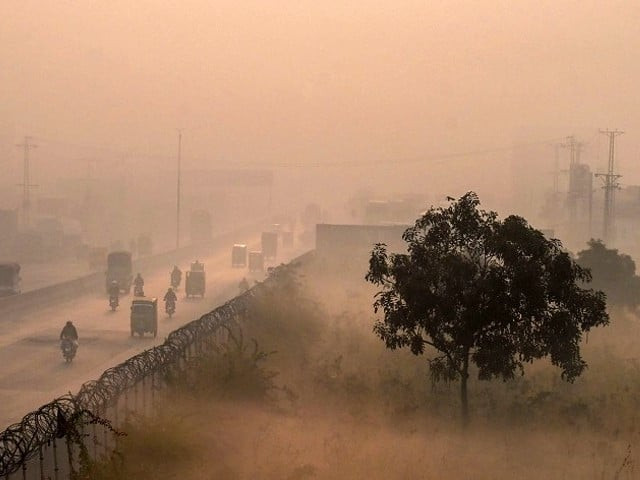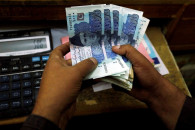Why are we under the shadow of smog again?
Pakistan requires scientific research, enforcement of a legal framework and the development of policies and strategies

Once again, the plains of Pakistan are under a thick layer of smog, and yet again we are to face the consequences. Although smog is a regular phenomenon that paralyses life in Punjab every year, we will start afresh every time with the government proposing new solutions and formulating a brand-new strategy for smog control because we have yet to adopt a long-term policy direction.
Last year, various short-term actions and meetings targeted snapshot interventions and as the situation normalised, due to the rains, we forgot all about the menace. This reactive mode of handling things has never worked and results in us constantly failing to tackle the problem with long-term, scientific solutions as is done in most advanced countries.
Smog is a result of anthropogenic activities, such as increased traffic, industrialisation and the rising pace of urbanisation. Smog emerged as a problem in Europe and USA in the early fifties and in Japan in the seventies, paralysing the course of daily life. The hard work of government officials in these countries in trying to understand the underlying causes, using science and policy interventions have helped them in successfully controlling smog. This success was due to extensive research conducted on the subject and clear enforcement of the air quality standards and laws. Pakistan needs to replicate such success stories if we want to seriously and effectively control smog in the long-run.
Similar efforts in Pakistan may require a great deal of scientific research, enforcement of a legal framework and the development of short, medium and long-term policies and strategies. The air quality, in many of Pakistan’s major cities, does not conform to the air quality standards specified in the National Environment Quality Standards (NEQS) and the regulatory framework of the Pakistan Environment Protection Act (PEPA) 1997. Recent reports and indicators, including the Air Quality Index (AQI) show the toxic air quality in cities like Lahore which has a reading of 202, Gujranwala with a reading of 122, and Islamabad with a reading of 129.
The major causes of air pollution are industrial emissions, vehicle emissions, domestic emissions, construction-related dust emissions, smoke from brick kilns and soot from the burning of agricultural waste. The magnitude and intensity of air pollution increases year after year due to increased commercial, industrial and vehicular activity. As a result of increased air pollution, airborne particles form a platform for the formation of smog, especially in the winter months when the air is calm and dry.
Smog also results in heavy economic losses because it disrupts communication signals, is a major health hazard and is the cause behind many accidents. While a lot of the sources contributing to the air pollution are local, trans-boundary air pollution also contributes towards smog as airborne particles move from one country to another via air currents.
To monitor and control the local and national air quality, PEPA 1997 and its regulations has been enforced at the national and provincial level (after devolution of the subject of environment to provinces in 2011).
Economic activities like construction, the burning of agricultural waste, burning of rubber and plastic waste for heating, and brick kilns are also regulated by various district and local municipality laws. These laws and regulations are very weak and not adequately enforced. Consequently, air quality is neither properly monitored nor controlled. There is a need to review the effectiveness of these laws and enact new ones, if needed.
To monitor the trans-boundary air quality in South Asia, the Governing Council of the South Asia Cooperative Environment Programme (SACEP) agreed on adapting the ‘Malé Declaration’ to monitor, control
and prevent trans-boundary air pollution in South Asia.
The ‘Malé Declaration on Control and Prevention of Air Pollution’ is an intergovernmental network involving SACEP member countries, that include Bangladesh, Bhutan, India, Iran, the Republic of Maldives, Nepal, Pakistan and Sri Lanka. The seventh meeting of the Governing Council of SACEP, held in April 1998 in Malé, adopted the declaration. The declaration emphasised the need for these countries to carry forward, or initiate, studies and programmes on air pollution.
Under this declaration, South Asian countries will collect and share air quality data with other member countries for effective monitoring. This will be done by using well-equipped air quality monitoring stations established at the borders of member countries. Pakistan has established two such stations, which still exist along the Pakistan-India border near Bahawalpur in Punjab and Tharparkar in Sindh. The arrangement worked smoothly till its fourth phase that ended in 2012.
The timely sharing of data across borders has proven to be an effective system to monitor air quality and has helped mitigate blame-games between countries.
Like other environmental issues, air quality monitoring involves a variety of stakeholders. This requires integrated and innovative approaches for a sustainable solution. Therefore, the following recommendations may help policymakers, planners and implementing agencies chalk out appropriate strategies.
Firstly, there is a need to identify the stakeholders, categorise pollution sources and list them in order of priority. Secondly, awareness should be created through a smart community mobilisation initiative. Thirdly, the government should figure out economically viable and socially acceptable alternatives to the sources of pollution in sectors such as transport, industry, construction, solid waste and agricultural waste. Lastly, the government should devise implementable strategies based on measurable and achievable objectives and outputs. Successful models of smog control adopted by advanced countries should be replicated.
The WRITER holds a PhD in Natural Resources Management and has served in provincial, national and global regulatory agencies as an environmental consultant
Published in The Express Tribune, October 31st, 2022.
Like Business on Facebook, follow @TribuneBiz on Twitter to stay informed and join in the conversation.


















COMMENTS
Comments are moderated and generally will be posted if they are on-topic and not abusive.
For more information, please see our Comments FAQ